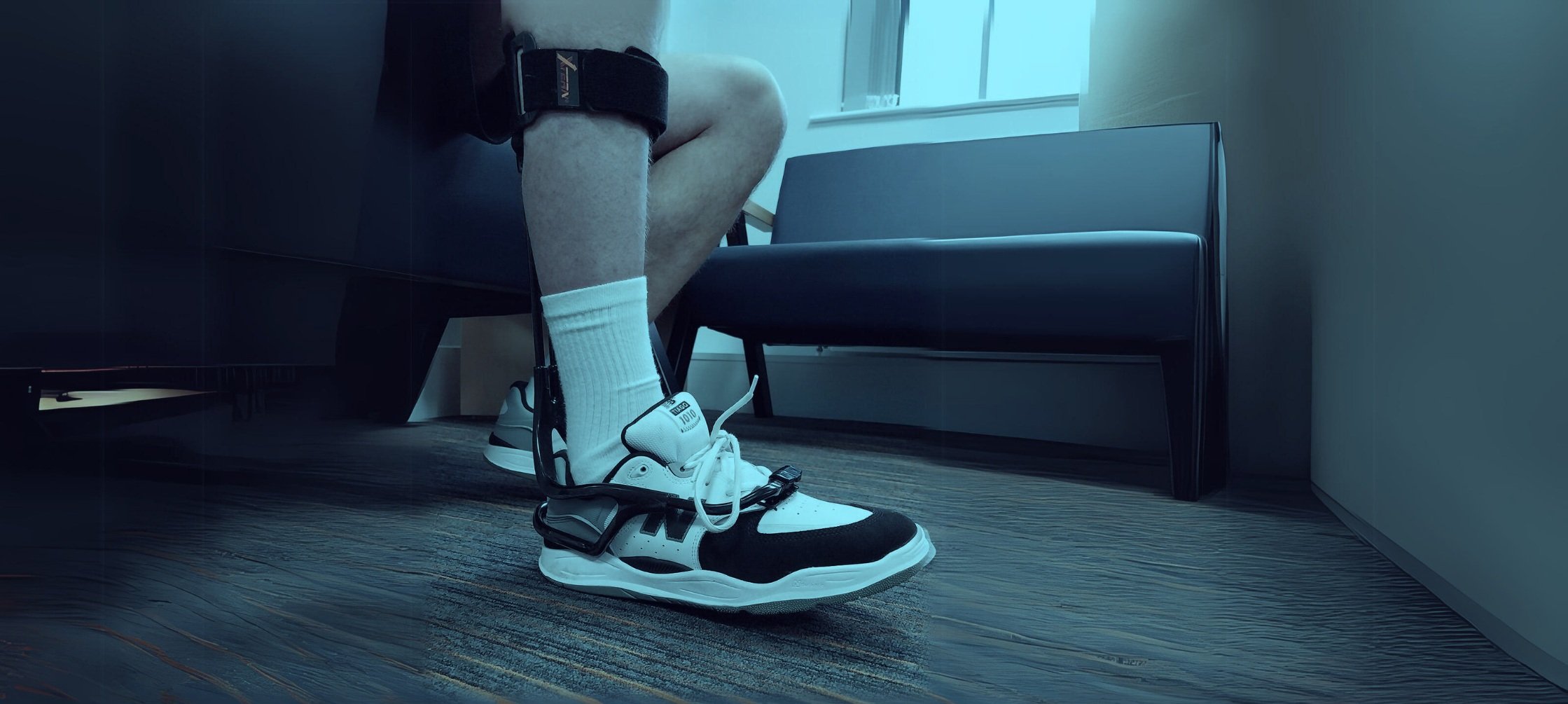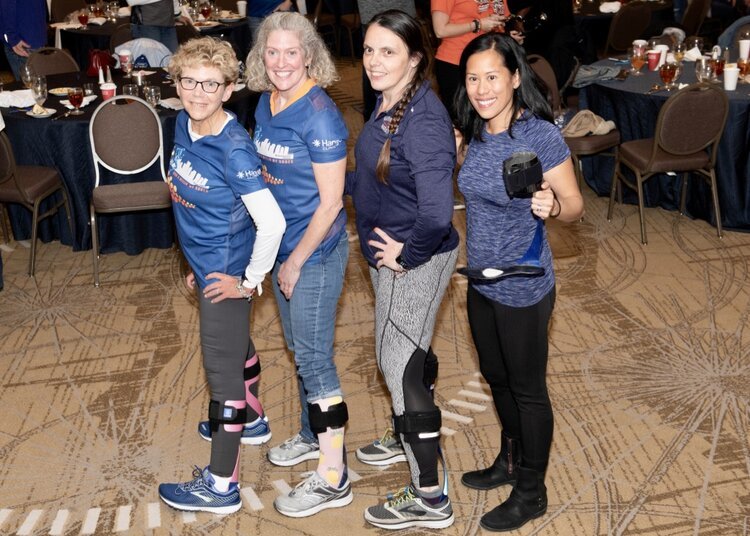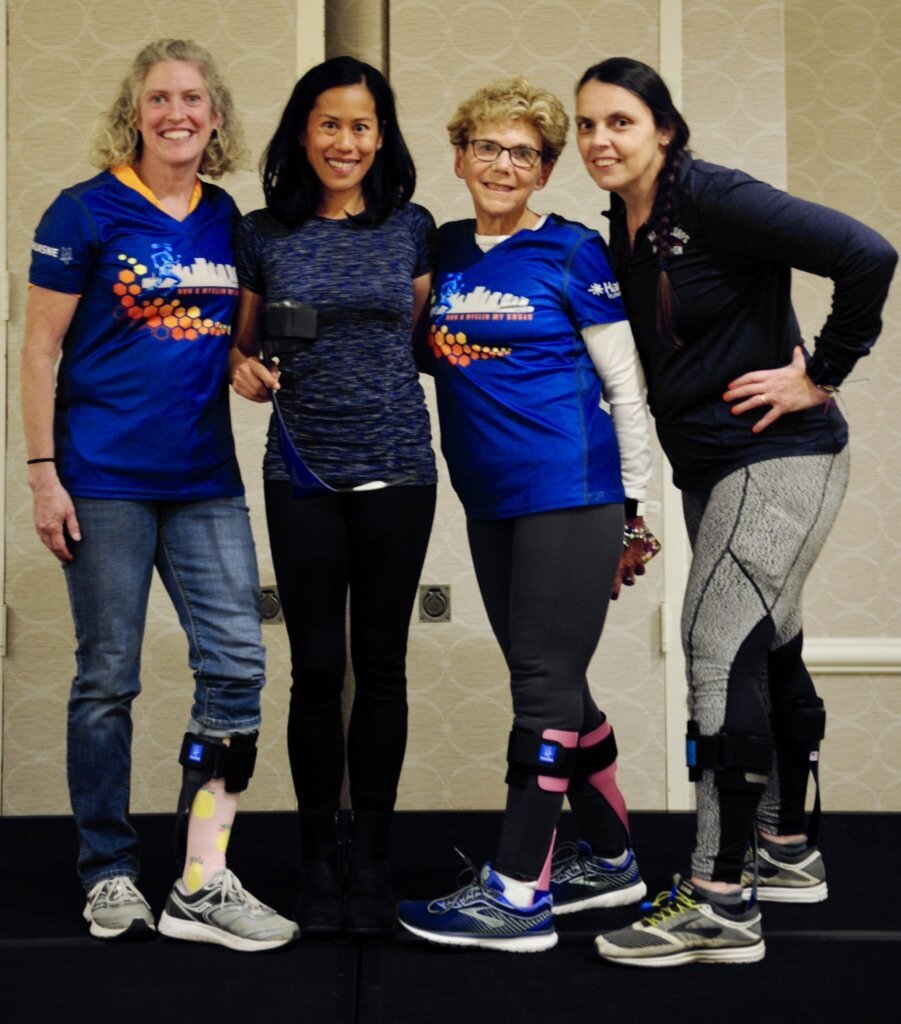
Read We Are MS Warriors Story
“Although it can be depressing to have a disease like MS, especially when one of the symptoms prevents you from being as active as you wish, it is so great to have friends and inspirational teammates who motivate you to keep pushing forward. We are MS Warriors!”


“Although it can be depressing to have a disease like MS, especially when one of the symptoms prevents you from being as active as you wish, it is so great to have friends and inspirational teammates who motivate you to keep pushing forward. We are MS Warriors!”
We are MS Warriors!
My friends and I are part of a dynamic team called Run A Myelin My Shoes. We are a group of athletes who live with Multiple Sclerosis (MS). We use exercise as one of our tools to stay strong so we can fight through the daily challenges of MS.
We have over 200 members, which includes MS Warriors and our family, friends and advocates.
Our 2021 event will be at the Indianapolis Marathon, Half and 5K in November. We also have energetic teammates from 17 countries who will be joining us virtually by doing some form of exercise on the same day. Some virtual teammates will run or walk, others will do sports like hiking, cycling, swimming, paddling, doing yoga and HIIT training. Anything goes! The important part is to be active!
Our team goal is to motivate others with MS to keep pushing forward to the best of their abilities despite a disease that compromises mobility. Another purpose is to provide support for each other. We offer tips and tricks to keep pushing forward, and lift spirits during difficult times. Lately there has been a lot of discussion about foot drop.
Foot drop is a common symptom of MS and many of us on the team contend with some degree of foot drop, whether it is something that creeps up on us after an hour of hard-effort racing or something that is prominent the minute we slide out of bed in the morning. Foot drop is different for all of us, but we understand and empathize. Hopefully these stories can give some inspiration to people suffering from foot drop.
Heather had been a nationally classed runner. One year, while training for Boston Marathon, she started tripping and falling over her foot. She was referred to a neurologist and subsequently diagnosed with MS. Her neurologist, also a marathoner, knew exactly how to keep Heather in the running game. After being referred to an orthotist, Heather was promptly fitted with an Ankle Foot Orthosis (AFO).
Not everyone is lucky to have a neurologist who understands a runner’s mentality of never giving up. Others like Koreen, Ellie and I did not have healthcare providers who suggested solutions for foot drop. We had to advocate for ourselves and conduct research to find ways to exercise safely.
Koreen is a cyclist at heart and has ridden a bike event in all 50 states. She took up running as an alternate exercise during off-season but started staggering while running long distances. She went to a physical therapist but the rehab drills did not help. She felt like “damaged goods.”
Koreen aggressively searched for a solution and saw an orthotist. The AFO she received, however, was an awkward military-style device that was not made for dynamic activity. Her second AFO gave her blisters. This left her feeling hopeless so she stopped running. It took Koreen several years to work up the gumption to try a different AFO and was lucky to find one that worked for her. She has been unstoppable ever since!
Ellie’s first AFO also gave her trouble. It was carbon fiber with medial and lateral thermoplastic polymer rods and was marketed as a “sports device.” The plastic was supposed to allow flexibility for the motion of running, however, Ellie broke her AFO after 8 months. Then while running with her second AFO from the same company, she rolled her ankle and ripped the carbon footplate right off the strut! After many failed attempts and a growing neuroma issue that caused painful numbness in her toes she finally found an AFO that worked. She has now been running in it for over a year and it’s still standing strong. She jokingly tells the kids next door it is a “bionic leg!”
I was diagnosed with MS in 2006 and shortly thereafter I started tripping and falling while running. My neurologist said to me, “lower your expectations.” But I persisted and received a prescription for an AFO from my podiatrist. My first brace was a plastic articulated AFO. It was terribly bulky and bruised my leg. Yet, I was desperate to run marathons so I gritted my teeth and pushed through all the aches and pains. Fortunately, my orthotist was proactive and took the initiative to fabricate a carbon graphite AFO that was sleeker and more well-suited for the long-distance running l craved so badly.
One of the hardest parts about toeing the start line of a race wearing an AFO is that people think your MS is not too serious. They don’t realize the trial and error in finding the right AFO, the tremendous amount of effort to retrain your gait, the experimentation with different shoes to find one that works with the AFO, and finding an orthotist who is willing to adjust the AFO to make it as comfortable as possible for running. There is a lot of hard work before an AFO-user can even get to the start line.
What are the results of all this hard work? Ellie has completed 5 marathons. Koreen hiked the 2,200-mile Appalachian Trail. Heather, who now wears bilateral AFOs and uses a walking bike, has started to run marathons again. And I became the first person with MS to run seven marathons on seven continents and I ran them all in 12 months.
Although it can be depressing to have a disease like MS, especially when one of the symptoms prevents you from being as active as you wish, it is so great to have friends and inspirational teammates who motivate you to keep pushing forward. We are MS Warriors!
Information about Run A Myelin My Shoes, as well as individual stories about these women, can be found at https://runamyelinmyshoes.org.
Thank you to Cheryl and team for sharing your story!
